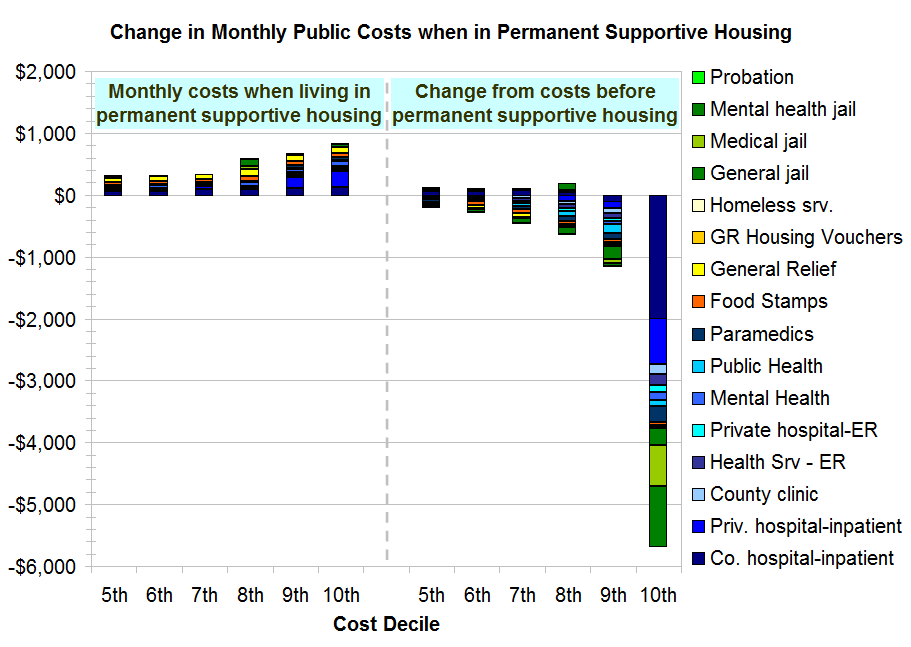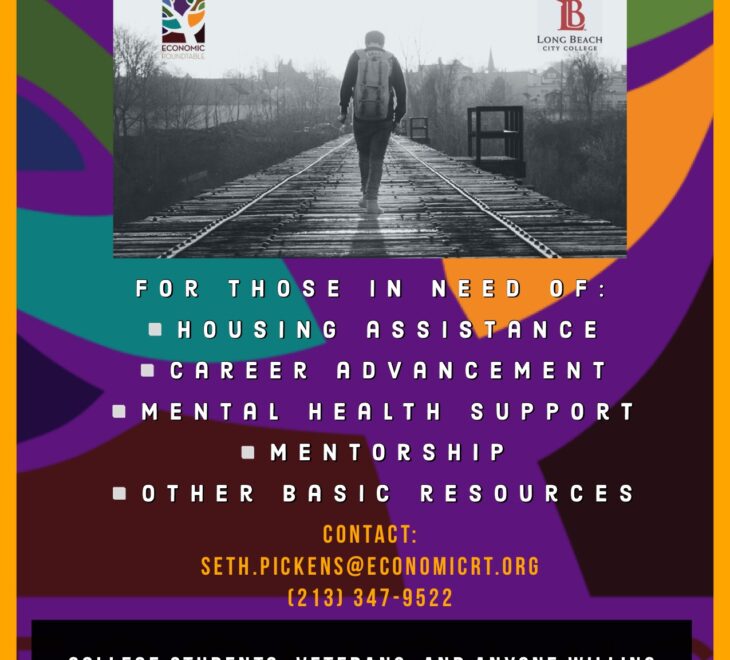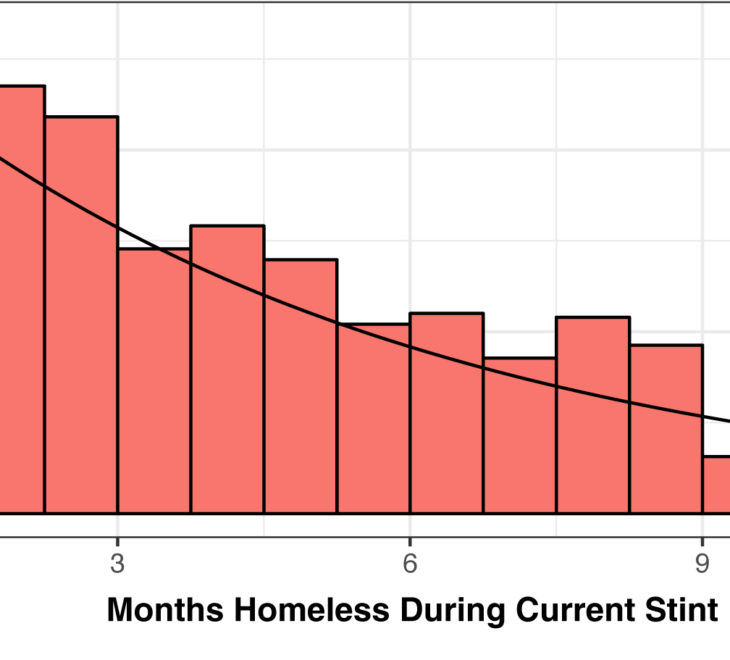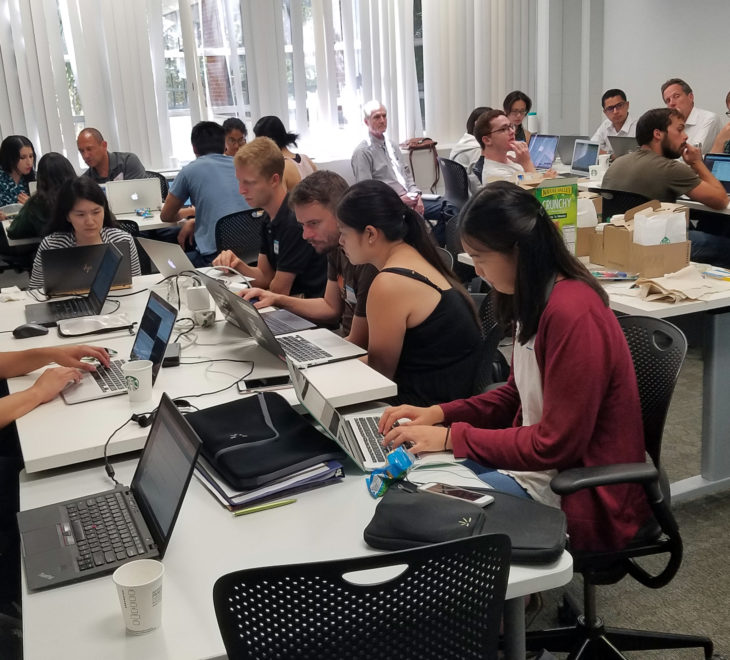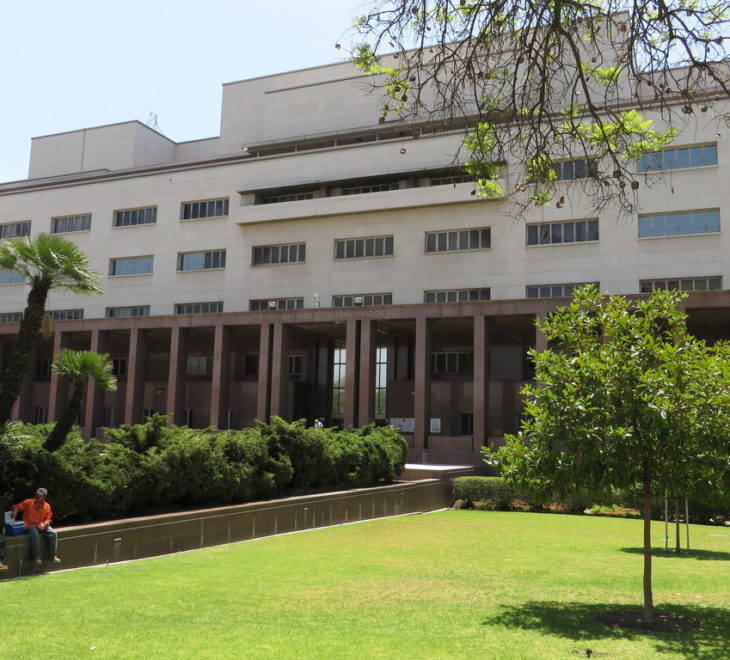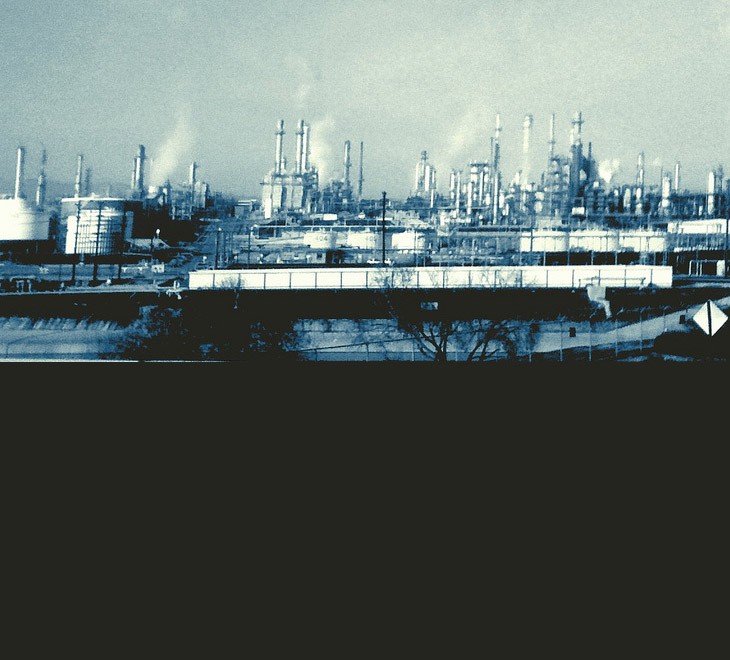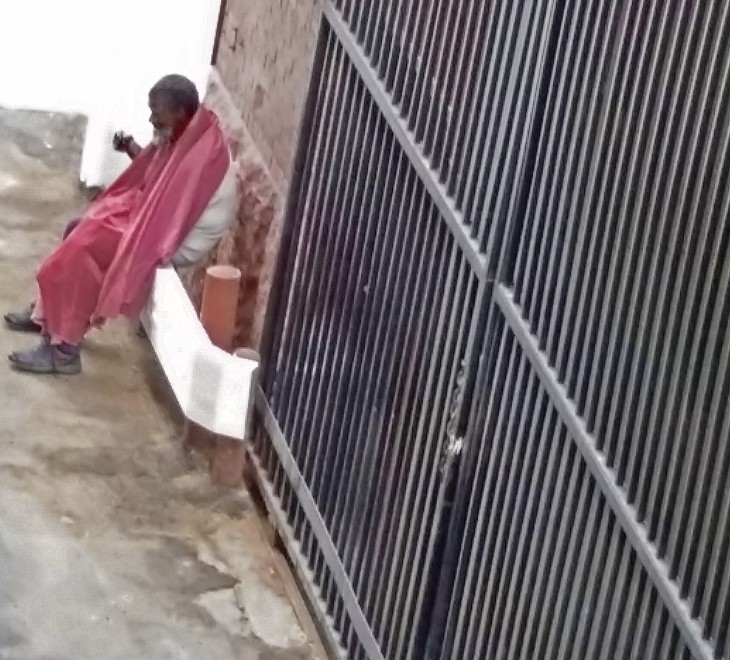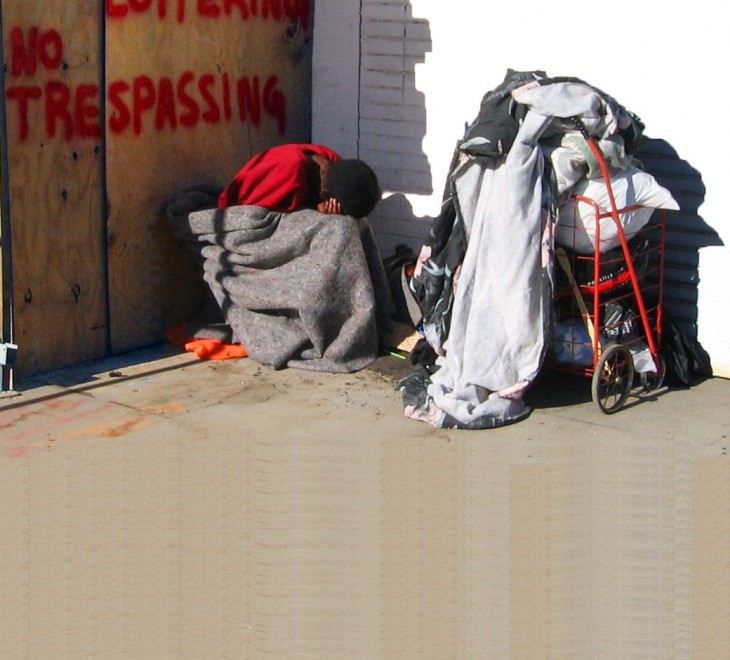Executive Summary
The triage tool, or crisis indicator, identifies homeless individuals in hospitals and jails who have continuing crises in their lives that create very high public costs. This redesigned tool is four times more accurate than the earlier screening tool released in 2010. The tool is developed for use in jails, hospitals and clinics where homeless individuals with high levels of need and high public costs are most likely to be found. (Our subsequent triage tool version 2, released in 2012, uses only data from hospitals and clinics in Los Angeles County, and is included with version 1.)
Discovery of the exceptionally high public costs for people in the 10th cost decile has led to interest in identifying these individuals and giving them high priority for access to permanent supportive housing. This group accounts for well over half of all public costs for homeless adults, and their costs decrease by 86 percent when they live in permanent supportive housing.
The triage tool was developed based on two key propositions. The first proposition is that the greatest risk to homeless individuals is of continuing crises in their lives, particularly crises that cause encounters with hospitals and jails. The second proposition is that the most compelling basis for prioritizing access of homeless individuals to the scarce supply of permanently subsidized supportive housing is the public costs that will be avoided when they are housed.
The triage tool is a system-based tool for identifying the one-tenth of homeless persons with the highest public costs, and the acute ongoing crises that create those high costs. This is the highest need segment of a much larger homeless population needing supportive housing.
This tool equips gatekeeper institutions to identify accurately individuals experiencing homelessness whose acute needs create the greatest public costs, and to make credible requests to housing providers that these individuals be given first priority for the scarce supply of affordable housing with supportive services (permanent supportive housing).
Many separate pieces of information provide evidence about the likelihood that someone will be in the 10th decile, but no single piece of evidence by itself provides enough information to identify this population with adequate certainty. The triage tool addresses this problem by combining the predictive power of 27 pieces of information to produce an estimate of the likelihood that an individual is in the 10th decile. This includes demographic characteristics, medical diagnoses, and use of hospital and jail facilities.
The most powerful components of the model are the number of days spent in hospitals as an inpatient or in jail mental health facilities as an inmate. Health conditions have a tipping effect in the model, some disorders increase and others diminish the likelihood that an individual is in the 10th decile.
To our knowledge, this is the only tool for prioritizing the needs of homeless individuals that is based on cost data for a generally representative sample of homeless persons. This was made possible by a unique and exceptionally valuable database created by Los Angeles County’s Chief Executive Office that links service and cost records across county departments for a representative sample of General Relief recipients, 70 percent of whom were homeless during the data window provided by the linked records.
The new triage tool has a shortfall rate of 0.22. This means that for every five people correctly flagged as being in the 10th decile, there will be one false negative – one person who is in the 10th decile will be incorrectly excluded.
The tool has a burden rate of 0.27. This means that for every five people flagged as being in the 10th decile, there will be one false positive – one person who is not in the 10th decile will be incorrectly included.
An initiative to identify homeless individuals with the greatest need for housing is being spearheaded by the 100,000 Homes Campaign, which mobilizes communities using a screening tool called the vulnerability index. Eighty-seven communities have participated in outreach and screening campaigns, in which local volunteer teams are trained to use an interview questionnaire based on the index to survey homeless residents and gather information for identifying homeless individuals at greatest risk of death. Information collected through the surveys carried out in these campaigns is used to develop health registries of individuals who are most likely to die on the street and who should have priority access to housing.
It is possible to use the system-based triage tool as a second layer of screening for registries developed using the street-based vulnerability index in order to identify multiple tiers of need within the overall universe of at-risk homeless persons. A third of the people identified by the vulnerability index as being vulnerable persons fall into the 10th cost decile, and two thirds are in lower deciles.
Multiple tiers of need within the population of vulnerable individuals can be delineated through follow-on screening using the triage tool. This combination of screening tools is a potential way of integrating the strengths of street-based campaigns that reach the overall population of unsheltered homeless residents with the rich body of system-based information held by gatekeeper institutions so that access to the scarce supply of permanent supportive housing can be prioritized based on public cost and potential cost savings.
An important contribution of the triage tool is to bring individuals with mental disorders into the population that is assessed. Only 59 percent of the persons diagnosed with a psychosis meet the vulnerability index criteria of being at-risk. The triage tool identifies and assesses the full population of high-need individuals suffering from delusions and hallucinations that distort their perception of themselves and their surrounding, often with great personal pain and sometimes with disruptions to their social environment.
Despite the desire of most homeless individuals to be housed, the transition from the street into housing may well be difficult. At a minimum, it means changing basic habits about eating, sleeping and co-existing with other people. These changes can be very challenging for an individual who is mentally and physically ill, addicted, and wary of the intentions of others. Immediate access to case management and health services along with housing is critical for helping the high-need, severely disabled individuals in the 10th decile make this transition.
A pilot project is underway to refine and validate procedures for using the triage tool. The project was planned jointly by the Corporation for Supportive Housing (CSH) and the Economic Roundtable, and is supported by the Conrad N. Hilton Foundation. The sites for the pilot are California Hospital Medical Center in downtown Los Angeles and Ocean Park Community Center (OPCC) Project HEARTH with Saint John’s Health Center and Venice Family Clinic in Santa Monica. CSH has organized teams at each site to provide immediate, comprehensive services for 10th decile homeless patients.
Pilot Projects
Several pilot projects have been carried out using the triage tool starting in the summer of 2011, which have helped refine and validate this triage tool. This pilot project is screening, identifying and immediately housing high-need homeless adults is in downtown Los Angeles and Santa Monica hospitals.
The projects were supported by the Conrad N. Hilton Foundation and carried out jointly with the Corporation for Supportive Housing (CSH), which has organized teams at each site to provide immediate, comprehensive services for 10th decile homeless patients. Read more details and information about our 10th Decile Project.
Santa Clara County, California, subsequently commissioned an Economic Roundtable homeless cost avoidance study, resulting in our report Home Not Found: The Cost of Homelessness in Silicon Valley, which included a new, more accurate Silicon Valley Triage Tool for Identifying And Housing High-Cost Homeless Residents.

